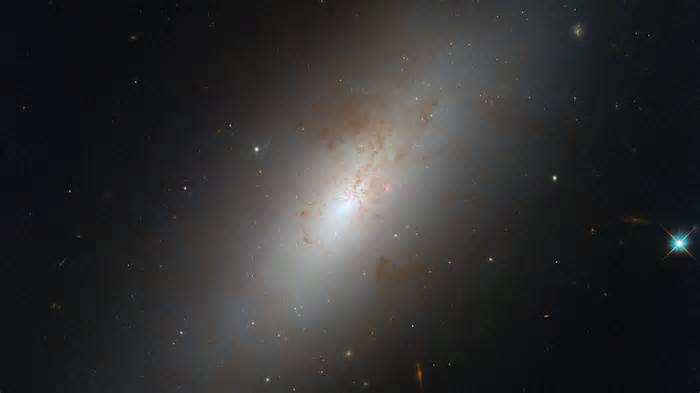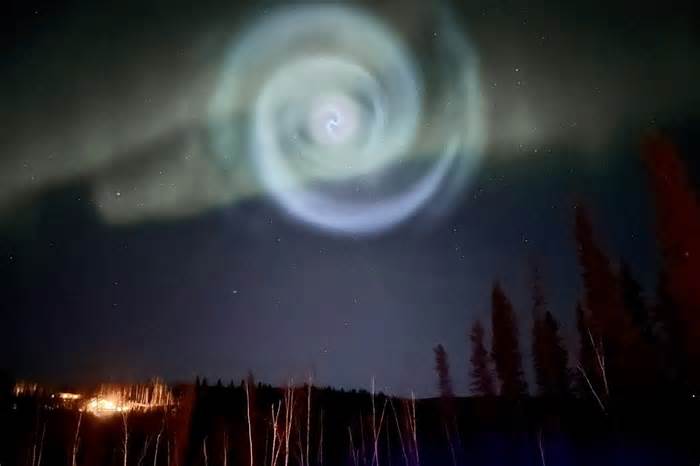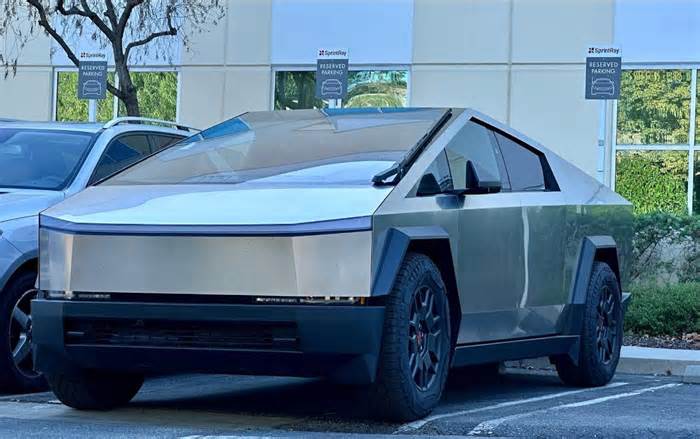
Space photo of the week: Hubble uncovers the true identity of an odd galaxy — and it's not spiral or elliptical
- by Live Science
- Nov 24, 2024
- 0 Comments
- 0 Likes Flag 0 Of 5

24 November 2024
The Hubble Space Telescope captured an image of NGC 4694, a galaxy that possesses unusual properties that complicate its classification.
When you purchase through links on our site, we may earn an affiliate commission. Here’s how it works.
The unusual galaxy NGC 4694 has traits unique to the two main galaxy types, spiral and elliptical.
(Image credit: ESA/Hubble & NASA, D. Thilker)
What it is: The galaxy NGC 4694, a member of the Virgo galaxy cluster
Where it is: 54 million light-years from Earth, in the constellation Virgo
When it was shared: Sept. 30, 2024
Why it's so special: NGC 4694 is a galaxy that cannot be easily classified into one of the two basic galaxy types: spiral and elliptical. Astronomers needed to examine its properties in detail to find its exact classification.
Spiral galaxies, such as our Milky Way, are relatively young and abundant in star-forming gas. They showcase distinct spiral arms adorned with hot, bright, young stars. In contrast, elliptical galaxies are more tranquil. These oval galaxies are composed primarily of older, redder stars. Most galaxies fall into these basic types.
However, NGC 4694 has properties of both types, complicating its classification, Hubble Space Telescope team members explained in a description of the image. It has a smooth-looking, armless shape, like an elliptical galaxy, and a disk with a low star-formation rate. However, it has relatively younger and newer stars forming in its central region. By contrast, elliptical galaxies do not typically contain the ingredients necessary for new stars to form. The active star formation, which powers the bright center, aligns more with the characteristics of a spiral galaxy. Like a young and lively spiral, NGC 4694 is rich in hydrogen gas and dust and is surrounded by a hydrogen gas cloud.
(Image credit: ESA/Hubble & NASA, D. Thilker)
The image also features reddish-brown dust forming unusual structures scattered across the galaxy, spreading out from the core. Interestingly, the surrounding cloud of hydrogen gas forms a long bridge to a faint and tiny nearby galaxy named VCC 2062. An in-depth study of this image revealed that the two galaxies may have interacted in an intense collision, allowing the larger NGC 4694 to steal gas from the smaller VCC 2062. This dramatic collision shaped NGC 4694 into its unique armless, smooth form characterized by active star formation, classifying it as a lenticular galaxy.
Sign up for the Live Science daily newsletter now
Get the world’s most fascinating discoveries delivered straight to your inbox.
Contact me with news and offers from other Future brands
Receive email from us on behalf of our trusted partners or sponsors
By submitting your information you agree to the Terms & Conditions and Privacy Policy and are aged 16 or over.
Please first to comment
Related Post
Stay Connected
Tweets by elonmuskTo get the latest tweets please make sure you are logged in on X on this browser.
Sponsored
Popular Post
Middle-Aged Dentist Bought a Tesla Cybertruck, Now He Gets All the Attention He Wanted
32 ViewsNov 23 ,2024
Tesla: Buy This Dip, Energy Growth And Margin Recovery Are Vastly Underappreciated
28 ViewsJul 29 ,2024






 Energy
Energy


















